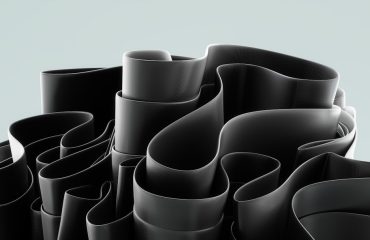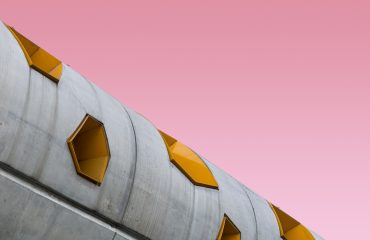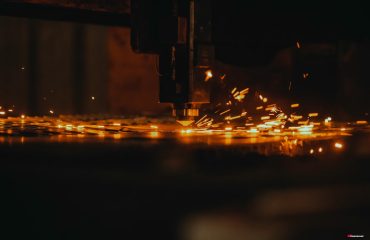The wind energy industry is booming, driven by the urgent need for clean and sustainable power. While the towering turbines are the most visible element, a crucial yet often overlooked component is the extensive use of steel profiles. These precisely engineered shapes form the backbone of wind energy projects, ensuring structural integrity, durability, and ultimately, efficient energy generation. This post delves into the multifaceted role of steel profiles in this rapidly expanding sector.
1. The Foundation of Wind Turbine Towers: Steel Profile Selection
Wind turbine towers, often reaching heights exceeding 100 meters, require exceptional strength and stability to withstand extreme weather conditions. The selection of appropriate steel profiles is paramount. Commonly used profiles include hollow sections (HSS), rectangular hollow sections (RHS), and circular hollow sections (CHS). The choice depends on several factors, including:
- Tower height and diameter: Taller towers necessitate stronger profiles to resist buckling and bending.
- Wind load capacity: Profiles must be designed to withstand the immense forces exerted by high winds.
- Manufacturing feasibility: The profile’s geometry should be conducive to efficient fabrication and welding.
- Cost-effectiveness: Balancing strength requirements with material cost is crucial for project viability.
- Corrosion resistance: The harsh outdoor environment necessitates the use of corrosion-resistant steel grades or protective coatings.
Advanced Finite Element Analysis (FEA) is employed to optimize profile selection, ensuring structural integrity and minimizing material usage.
2. Beyond the Tower: Steel Profiles in Nacelles and Blade Support
Steel profiles are not limited to the tower structure. The nacelle, housing the generator, gearbox, and other critical components, also incorporates various steel profiles for internal bracing and support. These profiles ensure the stability and proper functioning of the nacelle’s intricate machinery, even under dynamic loading conditions. Furthermore, the internal structure of wind turbine blades often utilizes steel profiles for reinforcement, particularly near the root where stress concentrations are highest. These internal structures enhance blade stiffness and fatigue resistance, contributing to the overall lifespan and reliability of the turbine.
3. Manufacturing Processes: Precision and Efficiency in Steel Profile Fabrication
The production of steel profiles for wind energy applications demands high precision and stringent quality control. Common manufacturing techniques include:
- Hot-rolled sections: This process involves shaping steel at high temperatures, resulting in strong and cost-effective profiles.
- Cold-formed sections: Suitable for complex shapes, this process involves shaping steel at room temperature, offering greater dimensional accuracy.
- Welding: Precise welding techniques are crucial for joining steel profiles to create robust and leak-proof structures.
- Surface treatment: Processes like galvanization or powder coating are essential to protect steel profiles from corrosion.
Automated fabrication techniques, such as robotic welding and laser cutting, are increasingly being adopted to enhance efficiency and precision in manufacturing.
4. The Impact of Steel Profile Design on Wind Turbine Performance
The design and selection of steel profiles have a direct impact on the overall performance and efficiency of wind turbines. Optimized profiles contribute to:
- Increased energy yield: A robust and stable structure allows the turbine to operate efficiently under various wind conditions.
- Reduced maintenance costs: Stronger profiles reduce the risk of structural failure and extend the lifespan of the turbine.
- Improved safety: Properly designed profiles ensure the structural integrity of the turbine, minimizing the risk of accidents.
- Reduced material usage: Optimized designs minimize material waste and contribute to sustainable practices.
Continuous research and development in steel profile design are leading to lighter, stronger, and more cost-effective solutions for wind energy applications.
5. Future Trends: Innovation in Steel Profiles for Wind Energy
The wind energy industry is constantly evolving, and so too is the use of steel profiles. Future trends include:
- High-strength steels: The development of advanced steel alloys with enhanced strength and fatigue resistance allows for lighter and taller wind turbine towers.
- Advanced manufacturing techniques: Additive manufacturing (3D printing) holds the potential to create complex steel profiles with customized geometries.
- Smart sensors and monitoring systems: Integrating sensors into steel profiles allows for real-time monitoring of structural health and early detection of potential issues.
- Sustainable steel production: The industry is increasingly focusing on reducing the carbon footprint of steel production through the use of recycled materials and more efficient processes.
These advancements will further enhance the efficiency, reliability, and sustainability of wind energy projects, contributing to a cleaner and more sustainable future.
Tags: steel profiles, wind energy, wind turbine towers, steel fabrication, renewable energy, structural steel




